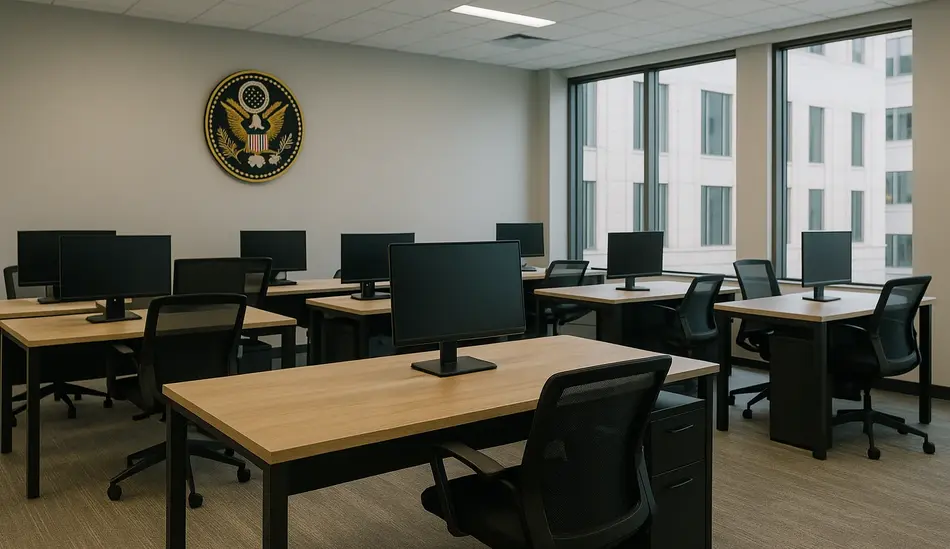Hybrid Work in Federal Jobs is falling rapidly as agencies bring employees back to the office. A recent Gallup survey shows that only 28% of federal workers now split time between home and office — a steep drop from about 61% six months ago.
While some remote roles remain, most departments are moving toward in-person schedules, citing collaboration, productivity, and service delivery. For many government staff, this means adjusting routines developed since the pandemic began.
What’s Driving the Shift
Leadership Directives
Agency leaders are under pressure to improve accountability and team cohesion. Many believe face-to-face interaction is key to faster problem-solving and mentoring newer employees.
Service Expectations
Federal offices dealing with the public — such as Social Security, IRS field branches, and passport centers — emphasize the need for in-person staff to support service quality.
Political and Budget Pressures
Lawmakers have criticized extended remote work, arguing it hampers efficiency. Budget reviews also push departments to make better use of office space.
Impact on Employees
Changing Schedules
Workers used to two or three home days each week are adapting to longer commutes and tighter office hours.
Retention Concerns
Some employees worry about losing flexibility, which had helped balance personal and professional demands. Agencies risk losing talent to private employers that still offer hybrid or remote roles.
Potential Upsides
Supporters of the change argue that in-person teams encourage innovation and improve training for new hires, especially in roles requiring collaboration.
How Agencies Are Adapting
Federal departments are experimenting with schedules to meet operational needs without alienating staff. Some allow compressed workweeks, while others keep limited telework for roles where duties can be done anywhere.
Training managers to lead hybrid teams effectively is another priority. Agencies are developing guidance on balancing productivity with employee well-being.
Lessons for the Broader Workforce
The government’s retreat from hybrid setups mirrors patterns in certain private industries. Companies in finance, law, and healthcare also favor physical presence for mentoring and client interaction.
For job seekers, this trend highlights the need to stay flexible. Opportunities for hybrid work remain, but they are likely to be concentrated in technology, marketing, and creative fields rather than public administration.
FAQs About Hybrid Work in Federal Jobs
Q1: What is happening to Hybrid Work in Federal Jobs?
It’s shrinking quickly as agencies reduce telework days and bring staff back to offices.
Q2: Why are agencies cutting hybrid schedules?
They cite teamwork, accountability, and public service quality, plus political and budget pressure to make better use of office space.
Q3: Are all remote options disappearing for federal workers?
No, some positions remain fully remote, especially in IT or analysis, but they are rarer than during the pandemic.
Q4: How should employees respond to less hybrid flexibility?
They can explore compressed schedules, request telework for specific tasks, or evaluate private-sector roles that maintain hybrid models.
Live Example: An Analyst Adjusting to Office Life
Dana, an analyst at a federal research agency, spent three years working mostly from home. When her department cut hybrid slots, she returned to the office four days a week.
At first, Dana found the commute draining, but she soon discovered mentoring junior staff was easier in person. She still hopes agencies keep a small telework allowance for deep-focus work, but she values the stronger team connections built face-to-face.




